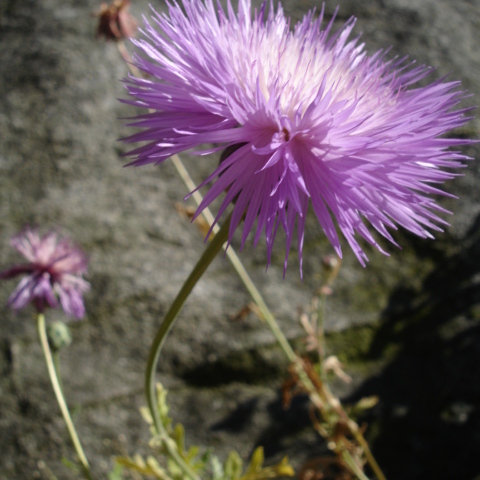Stems with slender branches. Leaf blades oblanceolate, 10–25 cm, margins dentate to lyrate-pinnatifid; cauline blades linear to lanceolate, margins dentate to pinnately dissected into linear-lanceolate segments. Heads long-pedunculate, ca. 5 cm diam. Involucres thinly hairy. Phyllaries green, rounded, outer scarious margined, inner with oblong, scarious appendages . Florets fragrant; outer conspicuously expanded, many lobed. Cypselae dark brown, 3.5–4 mm, glabrous; pappus scales 3.5–4 mm. 2n = 32 (from cultivated material).

